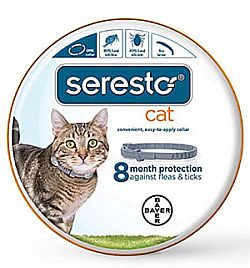Ana Jadanec – While flea and tick products containing pesticides repel and kill parasites that can potentially transmit disease-causing organisms, they can be harmful to your pet, your child and even adults in your household. It is not without reason that they shouldn’t be used on debilitated, aged, pregnant or nursing animals. Their potential toxicity and a range of harmful effects is obvious, as these products must be applied in the only place the dog is unable to lick or bite – it’s back.
According to Bayer, their products are waterproof and remains effective following a shampoo treatment, swimming or after exposure to rain or sunlight. So just imagine what is transferred onto your hands, lips, or cheeks while you play with, pet or kiss your dog! Furthermore, what does it say about a product that, when left partly unused, you are advised to call your local solid waste agency for disposal instructions, and you are never to place unused product down any indoor or outdoor drain.
Nature is ever changing, ever evolving. Like cockroaches, fleas are highly adaptable to their environment. Each generation that is exposed to the pesticides and chemicals is learning how to adapt, become stronger and more immune to these toxins. By using these products, are we really only killing and repelling fleas, or are we creating the super pests of the future?
 Unlike some popular collars described below, the Seresto collar has been carefully designed to control fleas and ticks on pets. It has been tested repeatedly to make sure that it will not cause any kind of harm to you and your pets. The product releases the active ingredients slowly and the low doses can ensure that they are not toxic to your pets. This is also one way to ensure that the doses are well within the safety margins.
Unlike some popular collars described below, the Seresto collar has been carefully designed to control fleas and ticks on pets. It has been tested repeatedly to make sure that it will not cause any kind of harm to you and your pets. The product releases the active ingredients slowly and the low doses can ensure that they are not toxic to your pets. This is also one way to ensure that the doses are well within the safety margins.
Some facts to consider
A pesticide is generally a chemical or biological agent that through its effect deters, incapacitates, kills or otherwise discourages pests. According to the Stockholm Convention on Persistent Organic Pollutants, 9 of the 12 most dangerous and persistent organic chemicals are pesticides. (1) The Natural Resources Defense Council (NRDC) says that approximately 90 percent of American households use pesticides.

